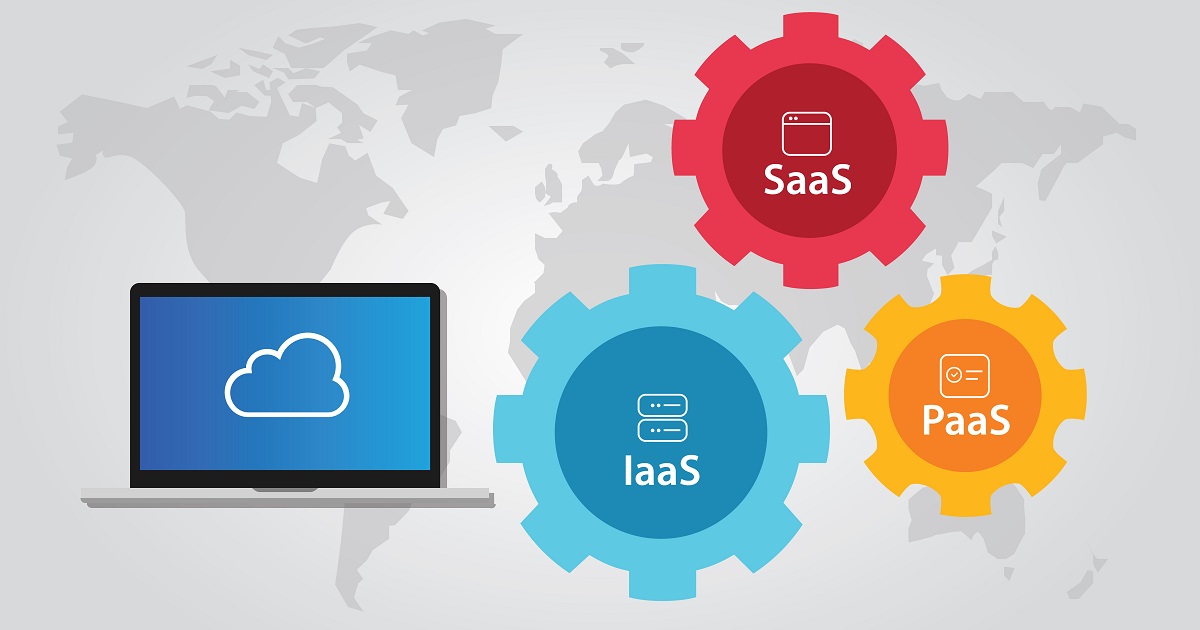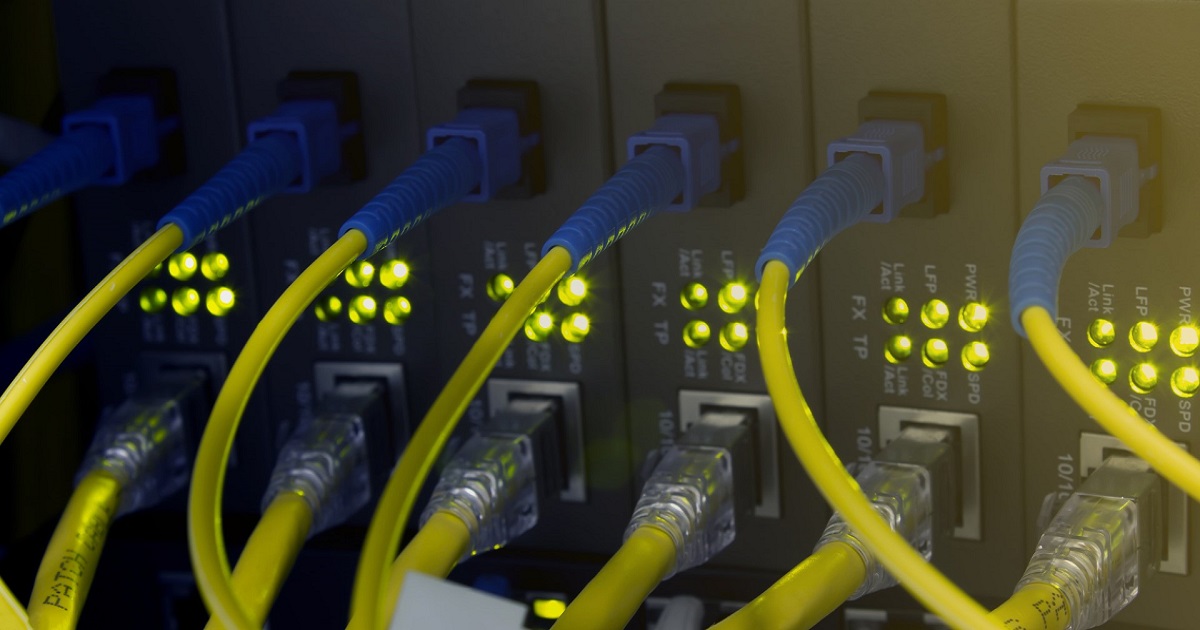
Hyper-Converged Infrastructure
Article | October 10, 2023
Nowadays, SaaS, IaaS, and PaaS are some of the most common names across the B2B and B2C sectors. This is because they have become the most efficient and go-to tool for starting a business.
Together, they are significantly changing business operations around the globe and have emerged as separate sectors, revamping concepts of various product development, building and delivery processes.
SaaS Vs PaaS Vs IaaS
Each cloud computing model offers specific features and functionalities. Therefore, your organization must understand the differences.
Whether you require cloud-based software to create customized applications, get complete control over your entire infrastructure without physically maintaining it, or simply for storage options, there is a cloud service for you.
No matter what you choose, migrating to the cloud is the future of your business and technology.
What is the Difference?
IaaS: Aka Infrastructure as a Service IaaS allows organizations to manage their business resources such as their servers, network, and data storage on the cloud.
PaaS: Aka Platform as a Service allows businesses and developers to build, host, and deploy consumer-facing apps.
SaaS: Aka Software as a Service offers businesses and consumers cloud-based tools and applications for everyday use.
You can easily access all three cloud computing tools on the internet browser or online apps.
A great example would be Google Docs; Instead of working on one MS Word document and sending it around to each other, Google Docs allows your team to work and simultaneously collaborate online.
The Market Value
A recent report says that by 2028, the global SaaS market will be worth $716.52 billion, and by 2030, the global PaaS market will be worth $319 billion. Moreover, the global IaaS market is expected to be worth $292.58 billion by 2028, giving market players many opportunities.
XaaS: Everything as a Service
Another term more frequently used in IT is XaaS, short for Everything as a Service. It has emerged as a critical enabler of the Autonomous Digital Enterprise.
XaaS is a term for highly customized, responsive, data-driven products and services that are entirely in the hands of the customer and based on the information they give through everyday IoT devices like cell phones and thermostats.
Businesses can utilize this data generated over the cloud to deepen their customer relationships, sustain the sale beyond the initial product purchase and innovate faster.
Conclusion
Cloud computing is not restricted by physical hardware or office space. On the contrary, it allows your remote teams to work more effectively and seamlessly than ever, boosting productivity. Therefore, it offers maximum flexibility and scalability.
IaaS, SaaS, PaaS; whichever solution you choose, options are always available to help you and your team move into cloud computing.
Read More

Hyper-Converged Infrastructure
Article | October 3, 2023
The pandemic has had a seismic impact on the telecom sector. This is perhaps most notably because where and how the world goes to work has been re-defined, with nearly every business deepening its commitment to mobility. Our homes suddenly became our offices, and workforces went from being centrally managed to widely distributed. This has called for a heightened need for widespread, secure and high-speed connectivity around the clock.
5G has answered the call, and 5G location intelligence and big data can provide service providers with the information they need to optimize their investments.
Case in point: Juniper Research reported in its 5G Monetization study that global revenue from 5G services will reach $73 billion by the end of 2021, rising from just $20 billion last year.
5G flexes as connected devices surge
Market insights firm IoT Analytics estimates there will be more than 30 billion IoT connections by 2025. That's an average of nearly four IoT devices per person. To help meet the pressure this growth in connectivity is putting on telecom providers, the Federal Communications Commission (FCC) is taking action to make additional spectrum available for 5G services and promoting the digital opportunities it provides to Americans. The FCC is urging that investments in 5G infrastructure be prioritized given the "widespread mobility opportunity" it presents, as stated by FCC Chairwoman Jessica Rosenworcel.
While that's a good thing, we must also acknowledge that launching a 5G network presents high financial risk, among other challenges. The competitive pressures are significant, and network performance matters greatly when it comes to new business acquisition and retention. It's imperative to make wise decisions on network build-out to ensure investments yield the anticipated returns.
Thus, telcos need not – and should not – go it blindly when considering where to invest. You don't know what you don't know, which is why 5G location intelligence and big data can provide an incredible amount of clarity (and peace of mind) when it comes to optimizing investments, increasing marketing effectiveness and improving customer satisfaction.
Removing the blindfold
Location data and analytics provide telcos and Communications Service Providers (CSPs) with highly-specific insights to make informed decisions on where to invest in 5G. With this information, companies can not only map strategic expansion, but also better manage assets, operations, customers and products.
For example, with this intelligence, carriers can gain insight into the most desired locations of specific populations and how they want to use bandwidth. They can use this data to arm themselves with a clear understanding of customer location and mobility, mapping existing infrastructure and competitive coverage against market requirements to pinpoint new opportunities. By creating complex customer profiles rich with demographic information like age, income and lifestyle preferences, the guesswork is eliminated for where the telco should or shouldn’t deploy new 5G towers.
Further, by mapping a population of consumers and businesses within a specific region and then aggregating that information by age, income or business type, for example, a vivid picture comes to life of the market opportunity for that area.
This type of granular location intelligence adds important context to existing data and is a key pillar to data integrity, which describes the overall quality and completeness of a dataset. When telcos can clearly understand factors such as boundaries, movement and the customers’ surroundings, predictive insights can be made regarding demographic changes and future telecom requirements within a certain location. This then serves as the basis for a data-backed 5G expansion strategy. Without it, businesses are burdened by the trial-and-error losses that are all too common with 5G build-outs.
Location precision's myriad benefits
Improved location precision has many benefits for telcos looking to pinpoint where to build, market and provision 5G. Among them are:
Better data: Broadening insights on commercial, residential and mixed-use locations through easy-to-consume, scalable datasets provide highly accurate in-depth analyses for marketing and meeting customer demand.
Better serviceability insights: Complete and accurate location insights allow for a comprehensive view of serviceable addresses where products and services can be delivered to current and new customers causing ROI to improve and customers to be adequately served.
Better subscriber returns: Companies that deploy fixed wireless services often experience plan cancellations due to inconsistencies of signal performance, which typically result from the misalignment of sites with network assets. Location-based data provides operators with the ability to adapt their networks for signal consistency and serviceability as sites and structures change.
The 5G future
The role of location intelligence in accelerating development of new broadband services and driving ROI in a 5G world cannot be overstated. It adds a critical element of data integrity that informs network optimization, customer targeting and service provisioning so telecom service providers can ensure their investments are not made with blind hope.
Read More

Hyper-Converged Infrastructure
Article | July 13, 2023
Revolutionize data management with HCI: Unveil the modernized storage solutions and implementation strategies for enhanced efficiency, scalability, sustainable growth and future-ready performance.
Contents
1. Introduction to Modernized Storage Solutions and HCI
2. Software-Defined Storage in HCI
3. Benefits of Modern Storage HCI in Data Management
3.1 Data Security and Privacy in HCI Storage
3.2 Data Analytics and Business Intelligence Integration
3.3 Hybrid and Multi-Cloud Data Management
4. Implementation Strategies for Modern Storage HCI
4.1 Workload Analysis
4.2 Software-Defined Storage
4.3 Advanced Networking
4.4 Data Tiering and Caching
4.5 Continuous Monitoring and Optimization
5. Future Trends in HCI Storage and Data Management
1. Introduction to Modernized Storage Solutions and HCI
Modern businesses face escalating data volumes, necessitating efficient and scalable storage solutions. Modernized storage solutions, such as HCI, integrate computing, networking, and storage resources into a unified system, streamlining operations and simplifying data management.
By embracing modernized storage solutions and HCI, organizations can unlock numerous benefits, including enhanced agility, simplified management, improved performance, robust data protection, and optimized costs. As technology evolves, leveraging these solutions will be instrumental in achieving competitive advantages and future-proofing the organization's IT infrastructure.
2. Software-Defined Storage in HCI
By embracing software-defined storage in HCI, organizations can benefit from simplified storage management, scalability, improved performance, cost efficiency, and seamless integration with hybrid cloud environments. These advantages empower businesses to optimize their storage infrastructure, increase agility, and effectively manage growing data demands, ultimately driving success in the digital era.
Software-defined storage in HCI revolutionizes traditional, hardware-based storage arrays by replacing them with virtualized storage resources managed through software. This centralized approach simplifies data storage management, allowing IT teams to allocate and oversee storage resources efficiently. With software-defined storage, organizations can seamlessly scale their storage infrastructure as needed without the complexities associated with traditional hardware setups. By abstracting storage from physical hardware, software-defined storage brings greater agility and flexibility to the storage infrastructure, enabling organizations to adapt quickly to changing business demands.
Software-defined storage in HCI empowers organizations with seamless data mobility, allowing for the smooth movement of workloads and data across various infrastructure environments, including private and public clouds. This flexibility enables organizations to implement hybrid cloud strategies, leveraging the advantages of both on-premises and cloud environments. With software-defined storage, data migration, replication, and synchronization between different data storage locations become simplified tasks. This simplification enhances data availability and accessibility, facilitating efficient data management across other storage platforms and enabling organizations to make the most of their hybrid cloud deployments.
3. Benefits of Modern Storage HCI in Data Management
Software-defined storage HCI simplifies hybrid and multi-cloud data management. Its single platform lets enterprises easily move workloads and data between on-premises infrastructure, private clouds, and public clouds. The centralized management interface of software-defined storage HCI ensures comprehensive data governance, unifies control, ensures compliance, and improves visibility across the data management ecosystem, complementing this flexibility and scalability optimization.
3.1 Data Security and Privacy in HCI Storage
Modern software-defined storage HCI solutions provide robust data security measures, including encryption, access controls, and secure replication. By centralizing storage management through software-defined storage, organizations can implement consistent security policies across all storage resources, minimizing the risk of data breaches. HCI platforms offer built-in features such as snapshots, replication, and disaster recovery capabilities, ensuring data integrity, business continuity, and resilience against potential threats.
3.2 Data Analytics and Business Intelligence Integration
These HCI platforms seamlessly integrate with data analytics and business intelligence tools, enabling organizations to gain valuable insights and make informed decisions. By consolidating storage, compute, and analytics capabilities, HCI minimizes data movement and latency, enhancing the efficiency of data analysis processes. The scalable architecture of software-defined storage HCI supports processing large data volumes, accelerating data analytics, predictive modeling, and facilitating data-driven strategies for enhanced operational efficiency and competitiveness.
3.3 Hybrid and Multi-Cloud Data Management
Software-defined storage HCI simplifies hybrid and multi-cloud data management by providing a unified platform for seamless data movement across different environments. Organizations can easily migrate workloads and data between on-premises infrastructure, private clouds, and public clouds, optimizing flexibility and scalability. The centralized management interface of software-defined storage HCI enables consistent data governance, ensuring control, compliance, and visibility across the entire data management ecosystem.
4. Implementation Strategies for Modern Storage Using HCI
4.1 Workload Analysis
A comprehensive workload analysis is essential before embarking on an HCI implementation journey. Start by thoroughly assessing the organization's workloads, delving into factors like application performance requirements, data access patterns, and peak usage times. Prioritize workloads based on their criticality to business operations, ensuring that those directly impacting revenue or customer experiences are addressed first.
4.2 Software-Defined Storage
Software-defined storage (SDS) offers flexibility and abstraction of storage resources from hardware. SDS solutions are often vendor-agnostic, enabling organizations to choose storage hardware that aligns best with their needs. Scalability is a hallmark of SDS, as it can easily adapt to accommodate growing data volumes and evolving performance requirements. Adopt SDS for a wide range of data services, including snapshots, deduplication, compression, and automated tiering, all of which enhance storage efficiency.
4.3 Advanced Networking
Leverage Software-Defined Networking technologies within the HCI environment to enhance agility, optimize network resource utilization, and support dynamic workload migrations. Implementing network segmentation allows organizations to isolate different workload types or security zones within the HCI infrastructure, bolstering security and compliance. Quality of Service (QoS) controls come into play to prioritize network traffic based on specific application requirements, ensuring optimal performance for critical workloads.
4.4 Data Tiering and Caching
Intelligent data tiering and caching strategies play a pivotal role in optimizing storage within the HCI environment. These strategies automate the movement of data between different storage tiers based on usage patterns, ensuring that frequently accessed data resides on high-performance storage while less-accessed data is placed on lower-cost storage. Caching techniques, such as read and write caching, accelerate data access by storing frequently accessed data on high-speed storage media. Consider hybrid storage configurations, combining solid-state drives (SSDs) for caching and traditional hard disk drives (HDDs) for cost-effective capacity storage.
4.5 Continuous Monitoring and Optimization
Implement real-time monitoring tools to provide visibility into the HCI environment's performance, health, and resource utilization, allowing IT teams to address potential issues proactively. Predictive analytics come into play to forecast future resource requirements and identify potential bottlenecks before they impact performance. Resource balancing mechanisms automatically allocate compute, storage, and network resources to workloads based on demand, ensuring efficient resource utilization. Continuous capacity monitoring and planning help organizations avoid resource shortages in anticipation of future growth.
5. Future Trends in HCI Storage and Data Management
Modernized storage solutions using HCI have transformed data management practices, revolutionizing how organizations store, protect, and utilize their data. HCI offers a centralized and software-defined approach to storage, simplifying management, improving scalability, and enhancing operational efficiency. The abstraction of storage from physical hardware grants organizations greater agility and flexibility in their storage infrastructure, adapting to evolving business needs. With HCI, organizations implement consistent security policies across their storage resources, reducing the risk of data breaches and ensuring data integrity. This flexibility empowers organizations to optimize resource utilization scale as needed. This drives informed decision-making, improves operational efficiency, and fosters data-driven strategies for organizational growth.
The future of Hyper-Converged Infrastructure storage and data management promises exciting advancements that will revolutionize the digital landscape. As edge computing gains momentum, HCI solutions will adapt to support edge deployments, enabling organizations to process and analyze data closer to the source. Composable infrastructure will enable organizations to build flexible and adaptive IT infrastructures, dynamically allocating compute, storage, and networking resources as needed. Data governance and compliance will be paramount, with HCI platforms providing robust data classification, encryption, and auditability features to ensure regulatory compliance. Optimized hybrid and multi-cloud integration will enable seamless data mobility, empowering organizations to leverage the benefits of different cloud environments. By embracing these, organizations can unlock the full potential of HCI storage and data management, driving innovation and achieving sustainable growth in the ever-evolving digital landscape.
Read More

IT Systems Management
Article | July 19, 2022
The cloud has dispelled many myths and self-made barriers during the past ten years. The utilization of cloud infrastructure keeps proving the innovators right. The cloud has experienced tremendous adoption, leading to the development of our most pervasive - and disorderly - IT infrastructure systems. This move calls for a new level of infrastructure orchestration to manage the complexity of changing hybrid systems.
There are many challenges involved in moving from an on-premises-only architecture to a cloud environment. IT operations teams must manage a considerably more complex overall environment due to this hybrid IT approach. Because of the variable nature of the cloud, IT directors have discovered fast that what worked to manage on-premises infrastructures may not always be applicable.
Utilize Infrastructure as Code Tools to Provide Cloud Infrastructure as a Service
IT has traditionally managed infrastructure orchestration and automation for business tools and platforms. Service orchestration and automation platforms (SOAPs) let non-IT workers turn on and off cloud infrastructure while IT maintains control. End-users are empowered with automated workflows that spin up infrastructure on-demand instead of opening a ticket for every request and waiting on the helpdesk or cloud service team. Automation benefits both end-users and ITOps. Users gain speed, and IT decides which cloud provider and how much cloud infrastructure is used.
Give End Users Access to Code, Low Code, or No Code
Modern SOAP lets citizen automators access workflow automation by preference or competence. SOAPs allow end-users to utilize code or no-code, depending on their preference. SOAPs let end-users access automation through Microsoft Teams, Slack, and ServiceNow. Developers and technical team members can access the platform's scripts and code.
As enterprises outgrow their legacy systems, infrastructure orchestration solutions become essential. Using a service orchestration and automation platform is one way to manage complicated infrastructures. SOAPs are built for hybrid IT environments and will help organizations master multi-cloud and on-premises tools.
Read More